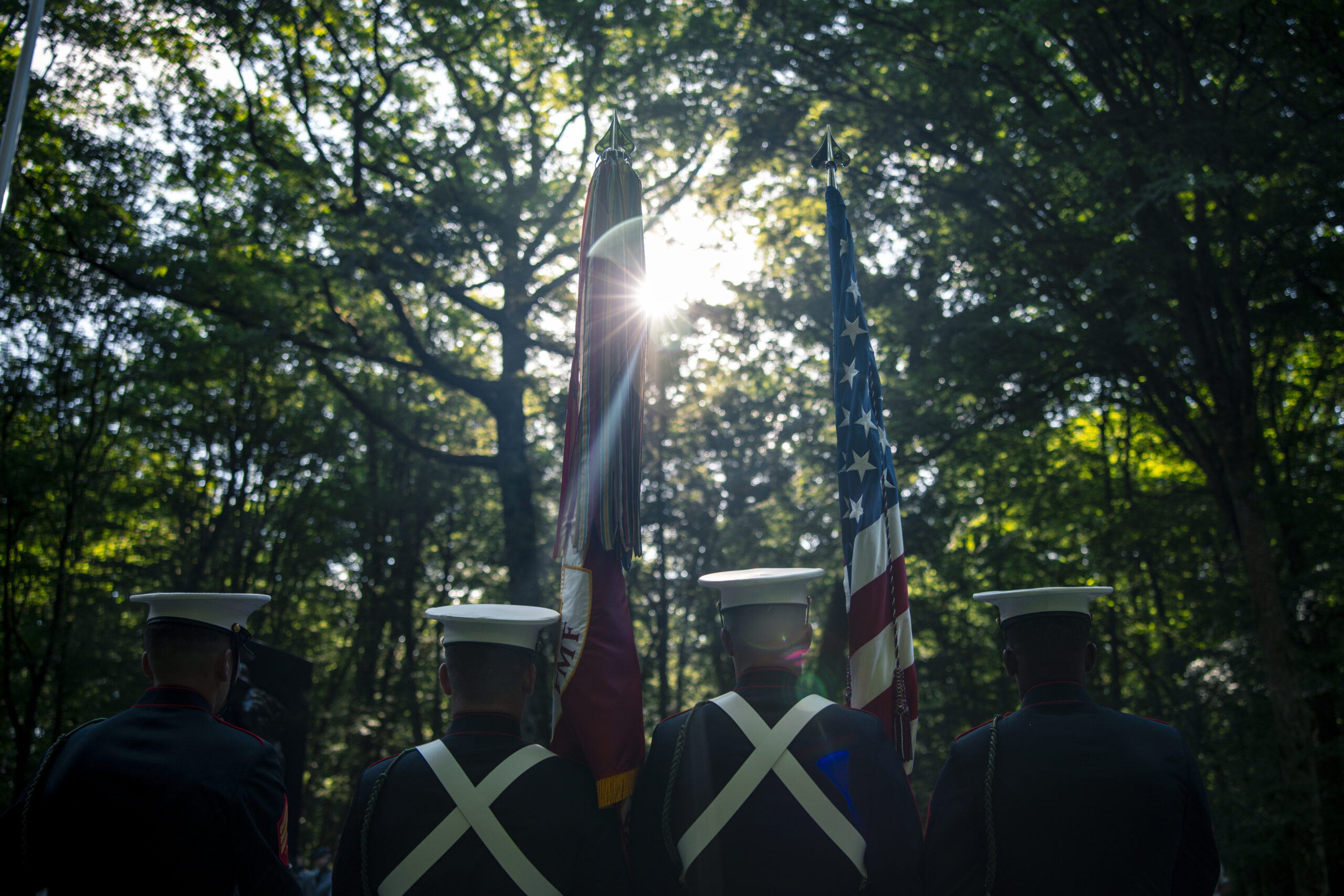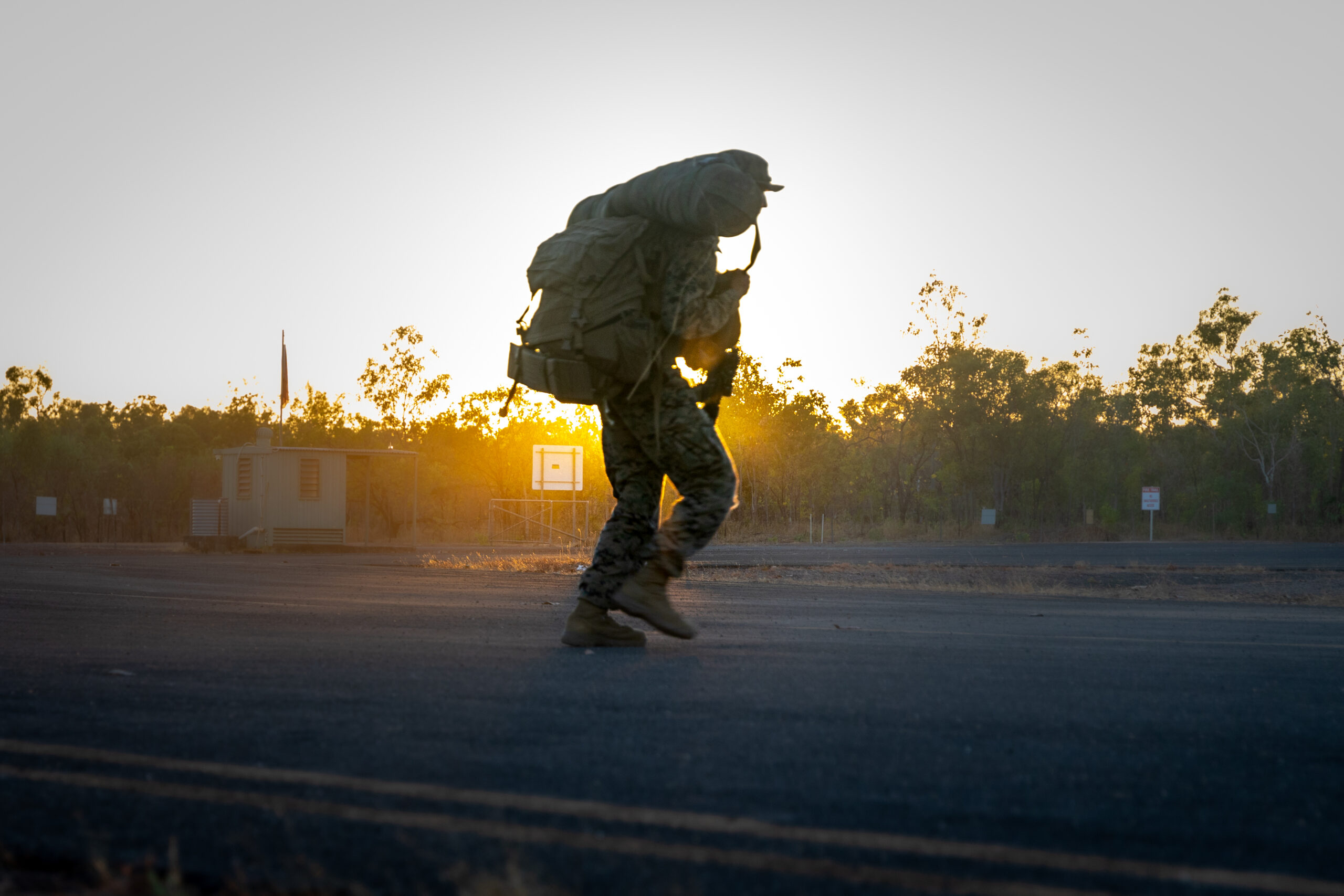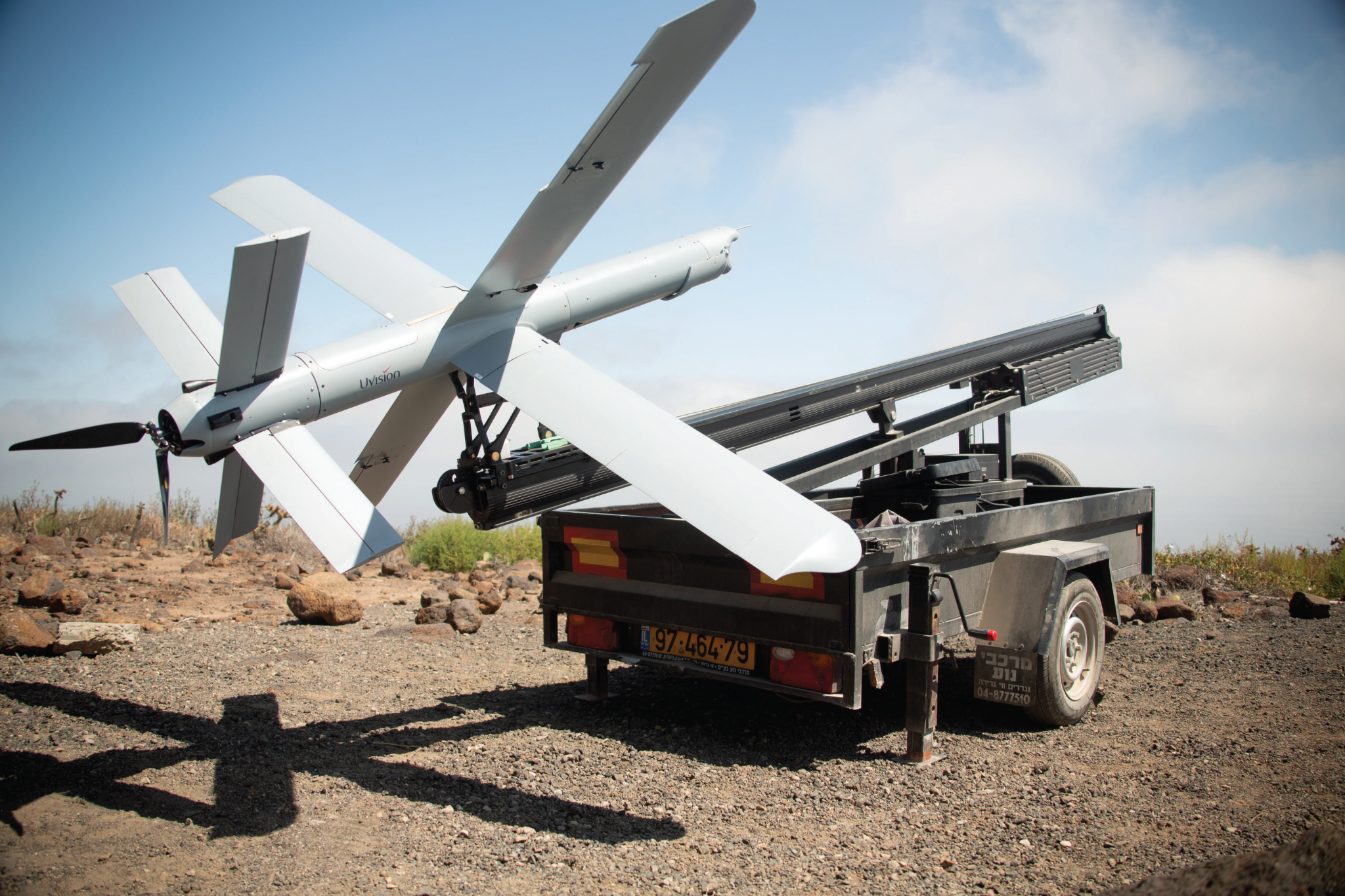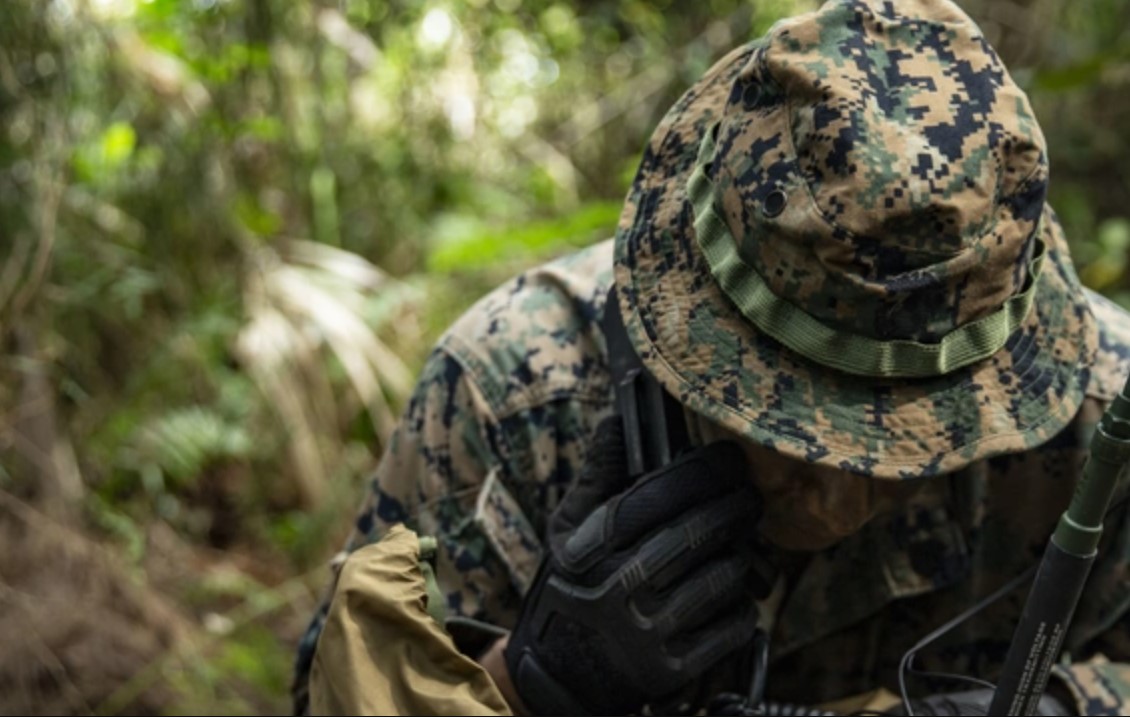Part 2: It’s not pretty: How ugly is AI progress in the Marine Corps logistics?
>See Part 1 for bios.
This is the second article in our three-part series. The first article discussed the topic of artificial intelligence and how it relates to Marine Corps logistics operations. This article describes how the advancement of our logistics enterprise toward artificial intelligence (AI) cannot rest on highly developed technologies alone.
LtCol Wolfe: I was a previous commander of the 3rd Supply Battalion, a large multifunctional logistics organization; I had a 75 percent and 25 percent rule. Success and effectiveness in running an organization extend beyond effectiveness and efficiency at the operations level. Seventy-five percent of my time was devoted to the tone, temper, and climate of the organization. In other words, things like vision, influence, morale, equality, leadership, mentorship, and decision making affect the entire organization. Beyond this, there were the daily requirements that consumed my time: substance abuse control, legal matters, personnel management, medical/dental readiness, training, inspections, safety, career planning, package routing, maintenance, facilities, budget, and the endless amount of paperwork that must be signed. Twenty-five percent of my time was left over for operations improvement and development. I focused on the conceptual aspects of command, not the technical ones. I relied on and trusted the technical acumen of those professionals embedded within the organization.
Maj Barnes: I was the operations officer for Combat Logistics Battalion 22, a small battalion with a broad set of capabilities (motor transportation, maintenance, medical readiness, supply, engineering, landing support, explosive ordnance disposal, and communications). The battalion had roughly 300 Marines and sailors who possessed around 80 occupational specialties. Due to the broad scope and narrow depth of the battalion, all personnel issues and considerations were unequivocally linked to battalion operations—Marines and sailors become the “one-of-one” capability. The cornerstone of the job was a balancing act to ensure capabilities are maintained and ready amidst incredibly dynamic personnel shifts (permanent change of station orders, promotions, disciplinary actions, end of service, injuries, etc.).
The Problem: Conceptually
The Marine Corps has a group of smart officers that adapt very well. The Marine Corps culture fosters adaptability and decision making with uncertainty extremely well. Unfortunately, the manpower system pays little attention to innate talents, college degrees, or commercial work history. It does not seem to be recruiting specific talent to handle our future data-driven challenges. Instead, it is purely a numbers game. For example, the offensive coordinator does not recruit specific quarterback talent from a pool of college baseball and minor league players. Likewise, Amazon is not recruiting supply chain managers or business analytics or distribution experts from the geology department at Penn State; they are looking for top-performing applicants from the business and statistics departments who have internship experience. The Basic School is often the luck of the draw, with Marines thrown into the logistics world with no formal understanding or passion for the field, and they then receive cursory training in our schoolhouses. There is no clear path to an advanced understanding of how logistics operate and the data that supports decisions and feeds new technology. Some military skills need to be developed within the Marine Corps because there is not a commercial industry talent pool: infantry, artillery, etc. However, this is not the case with logistics. Logistics and analytics are in every industry, every university, and every business model. But the Marine Corps training model for logistics and supply officers takes a wide range of individuals and begins their training from zero. This method does not allow for gaining efficiencies provided by university degrees or the latest industry applications. Progress, improvements, and innovation are systematically stunted by the current methods of assigning occupational specialties.
The battleground for AI progress is ugly and full of shortfalls that must be addressed. We will describe the people and skills shortfalls within the Marine Corps’ logistics enterprise, which we believe must be addressed prior to the exploitation of AI. We are not saying that we are bad at logistics; however, through the spectrum of business analytics, the Marine Corps logistics enterprise is not prepared to transition current practices toward AI for logistics command and control and decision making. Logisticians across the Marine Corps possess the conceptual understanding, but there is an exceptionally large gap in the technical abilities to transition raw data and information into useful AI systems.
We propose that our logistics business structure is off. Structurally, Marine Corps logistics is missing key business attributes within its skills progression. Do not be fooled—the Marine Corps logistics enterprise is a business, even though the business is not driven by profit. It is a business because it is driven by decisions about how to manage scarce resources. Business analytics is a significant technical skill required at supervisory and middle management levels, and we propose that it is an altogether missing element in the administration of our logistics structure. Advanced systems will not solve people problems. Back to the football example, a perfect system, designed by the greatest football offensive coordinator, will not reach its full potential without appropriately skilled players to execute it. So, who are the players?
Data Skills Requirement
The major players in implementing artificial intelligence must possess two critical attributes. First, they must have a deep understanding of Marine Corps logistics. Secondly, they must have a high aptitude for technical skills around data analytics.
In the previous article, we described that business analytics is the precursor to artificial intelligence. We also explained that business analytics encompasses data, information, and knowledge. To expand on that concept further, the science of analytics is generally divided into three fields of study: descriptive analytics, predictive analytics, and prescriptive analytics. The core competencies of descriptive analytics are rooted in statistical analysis. Predictive analytics builds on descriptive by creating models to predict outcomes based on information. And, finally, prescriptive analytics focuses on what should happen in the future. In other words, based on the predictions, what decision should be made to affect the predicted outcome?
Across the three fields of analytics, data visualization is a key component. Data visualization serves two very critical functions. First, the human brain has strong and natural abilities to observe patterns. Therefore, data visualization is a critical step for understanding data and relationships. Second, data visualization is a very powerful tool to convey relationships and communicate concepts to individuals with a wide range of skills and abilities. Data visualization makes concepts from analytics tangible and understandable to people, even when they do not fully understand the deepest technical aspects.
Business analytics software generally falls into two categories: business intelligence and business analytics applications. According to IBM, business intelligence is “an umbrella term for the technology that enables data preparation, data mining, data management, and data visualization.”1 The software company, Oracle Corporation, compares business intelligence and business analytics by stating the purpose of business analytics: To make data-driven predictions about the likelihood of future outcomes, business analytics uses next-generation technology, such as machine learning, data visualization, and natural language query.2
The variety of available tools and resources to perform business analytics/intelligence are too numerous to cover in this article. However, it is worth mentioning a few entry-level software platforms that are well-known and highly used. First and foremost, Excel can run various basic analytics and Marine Corps logistics personnel do not typically scratch the surface of its inherent capabilities; for example, think solver. Going beyond Excel, other powerful data analytics programs include PowerBI, Tableau, R, and R-studio. These programs are more powerful than Excel and are specifically designed to perform business analytics/intelligence tasks. These programs are important because they are capable of handling data and transforming information into actionable insights to inform leaders as they make decisions.
Current, Disorganized Systems
Maj Barnes: While at Penn State, I chose to pursue a professional certification in business analytics in addition to a master’s degree in supply chain management. During the coursework, my eyes were opened to the expansive world of business analytics and its applications. Reflecting on what I learned in the classroom, I looked back on my recent operations officer billet. I had hands-on, daily interaction with a multitude of digital platforms to perform and track battalion operations. The best way to describe the experience is segregated and misaligned. It is a common occurrence that, when there is a data call for training, organizations will use Marine Corps Training Information System metrics, but the Marine Corps Training Information System does not match the morning report, and the morning report is different than 3270 because updates are pending. Then, once the final roster is identified, it is discovered that a lance corporal that checked in two days ago received the training at his previous unit, but it never got entered. Furthermore, there is a corporal that checked out of the unit on temporary-duty orders 25 days ago, but he is at a remote training location and cannot be reached, and he did not receive the training that is reflected in our Marine Corps Training Information System. The S-1, S-3, sergeants major, and the individual sections spend hours tracking this information down. All this is, of course, happening in the background as general update briefs, along with PowerPoint representations of maintenance readiness information, are being refreshed. Furthermore, there is other information that must be collected, analyzed, and reported for readiness reporting in DRRS-MC. Put simply, it is too much—too much information, too many systems, and too much redundant effort.
Excess in anything is not a good thing. There are seven deadly sins in supply chain management implementation that are routinely discussed, one of which is having too many options from which to choose.3 In our search among high-level organizations, it was discovered that the Marine Corps logistics enterprise has over one hundred information systems that are used, partially used, or available but ignored by the logistics community, and it is unclear who owns and controls the systems. There are too many managing systems functioning in fast-changing environments. Too many tools and data repositories lurk in the shadows. It is hard to keep pace and know where these systems hide. Most do not interact with one another; rather, they are silos that operate independently. The number of systems is so numerous that many officers do not know they exist, much less how to maneuver within them. Marine Corps logistics information and data are everywhere and nowhere. AI cannot save that business model.
Data collection is a good thing, but with unbounded collection comes risk; indeed, too much data can be worse than not enough. It is clear that there is a wide variety of elements within Marine Corps logistics production that must be monitored. Collecting everything just because it is easy to gather the data is not an appropriate monitoring system.4 Too much irrelevant data can hide the more valuable data and make an already complex and disjointed network of systems more complex, resulting in faulty control measures that keep repeating themselves. Silo monitoring policies from shadow logistics element “mafias” has added to the dilemma. In the end, if we want our systems to have better performance, we must simplify data collection, alter the processes, and have personnel on hand who fully understand analytics. AI will not fix these persistent process gaps. Therefore, AI should not be viewed as a savior for something that is deeply rooted within our core business practices:
Digital waste is especially detrimental to the supply chain. It refers to redundant or unnecessary data that is collected, managed, and stored for no tactical or strategic reason. The amount of digital waste within an organization is typically great. It increases exponentially when one considers the data flow among members in a supply chain.5
AI implementation requires special analytics talent and skills. Determining where to position the talent is a critical decision in an organization as large as the Marine Corps. The division of labor is not only broken down between officer and enlisted but goes much further into a large array of MOSs.
Within the managerial hierarchy, there are essentially three levels—top, middle, and supervisory. Top-level managers are responsible for controlling and overseeing the entire organization. Middle-level managers are responsible for executing organizational plans which comply with the company’s policies. They act as an intermediary between top-level and supervisory-level management. Supervisory-level managers focus on the execution of tasks and deliverables and serving as role models for the employees they supervise.6
In any organization, there are certain skills associated with each management position. These skills are technical, human, and conceptual. The transition of technical, human, and conceptual skills corresponding with the supervisory, middle, and top management roles is a well-described framework in the business environment (Figure 1). Looking specifically at the business skills required for Marine Corps logistics operations at the battalion level, the top management are the battalion commander, majors, and sergeants major; middle management is captains, CWO3-CWO4, master sergeants, first sergeants, and gunnery sergeants; and supervisory management is first/second lieutenants, CWO/CWO2, and corporals through staff sergeants.
Not all levels of management need the same skills and points of view shift depending on an individual’s level. For example, a general officer does not view the skills framework from the same perspective as a battalion commander. At the level of general officer, it is very easy to imagine how battalion commanders can be considered middle management (possibly even supervisory management) when there are regiments, divisions/groups, and MEFs between the most senior generals and battalions. With respect to AI and supply and logistics operations, the supervisory management level requires understanding independent versus dependent variables, knowing how to make statistical predictions, and understanding the scope of the data needed (e.g., six weeks or ten years’ worth). I (Maj Barnes) did not learn these things until participating in my intermediate-level resident school at Penn State—too late when I am already at the top management level, where conceptual thinking prevails over technical.
LtCol Wolfe: In my previous organizations, (for example, Supply Battalion) we collected a lot of data. In my conceptual leadership role, I did not have the time, resources, or, unfortunately, the training in higher-level analytic skills to precisely develop, read, or formulate massive amounts of data and information into something actionable. Holistically speaking, I was already past the technical and was operating from a conceptual level. I relied on supervisory- and middle-level managers to oversee this task. All the while knowing that the business-level analytics needed was not taught in Marine Corps schools. This knowledge gap forced my personnel to learn on the go, and often on their own. My CWOs, who specialized in specific domains of logistics, had to take personal initiative to get up to speed with industry to stay above water. I was keenly aware that most of my staff were not trained for that type of technical understanding. Additionally, prior to my assignment with Supply Battalion, I had served as the Field Supply Maintenance Analysis Office–Western Pacific officer in charge. In this data-centric organization, I also saw that something was missing within all the Marine units my teams analyzed. Not until becoming a fellow at Penn State and participating in the supply chain management coursework did I realize the missing component was business analytics. Today, these functions are often the cornerstones for advances in operations at any level of commercial business operation. If any organization should have the training, specialized skills, and current industry supply chain management tools to assist with analytics, it should be the supply battalions and Field Supply Maintenance Analysis Office–Western Pacific, yet neither did! Unfortunately, the norm is to fall back to spreadsheets or ACCESS, regurgitate the data into it, and then attempt as well as possible to formulate conclusions. My experience highlights an area where the Marine Corps logistics enterprise is behind in advanced business analytics. With these skills being the cornerstone of AI, Marine Corps logistics is not positioned to establish AI systems and practices.
In conclusion, no matter your point of view, information wrangling requires the technical understanding of middle and supervisory managers. Logistics technology, information systems, and business analytics tools are not commonplace in our entry- or mid-level training models. We tend to be broad in scope and rarely, if at all, incorporate commercial industry practices or state-of-art tools to implement advanced analytics for logistics operations.
Current Skill Set Pipeline
It is unnecessary for the Marine Corps to create its own talent pool of software engineers that can develop from scratch these complex systems. That is a bridge too far. However, Marine Corps logistics does not have a group of professionals with the technical skills to manage data on an advanced level. Rather, there is a pool of Marines looking at white noise, trying to understand what it means and where it may fit into complex AI systems or even basic decision making.
Brooks McKinney, in his Northrop Grumman article, “Defense AI Technology: Worlds Apart from Commercial AI,” says:
AI is not simply a “bolt-on” capability that will make everything more capable than before. It doesn’t instantly make things smarter. AI must be integrated into a system from the ground up. According to Jackson Bursch, an AI software engineer for Northrop Grumman, defense AI requires a diverse skill set, including more disciplines than the domain of software engineering. “We’re not just developing software, we’re developing complex systems that work in every domain,” he explained, So, we need people who specialize in specific sensors for data collection, others who can build AI software and still others who can handle the network engineering that connects those sensors to our software.
Talent Management 2030 states, “Every Marine treated like a round peg, every billet like a round hole.” The tangible aspect of this concept in the logistics community is that there are approximately 1,540 second lieutenants through captains with a supply or logistics MOS. The 1,540 Marine officers in that category have approximately 170 degrees among them (Figure 2). The degrees range from ocean engineering and forestry to advertising, art studies, and biblical studies.
Therefore, these individuals were processed as if through a meat grinder. In other words, they were assigned a supply or logistics MOS, sent to three months of supply and logistics school, and then assigned as maintenance management officers, platoon commanders, supply account holders, etc. Logistics problems have always been calculus problems—constantly changing in space, time, and scope. The future of logistics problems will be driven by data, restricted communications, and deep understanding. As an example, consider the following situation.
A logistics unit will be on the move from Objective D to Objective E. They know Objective E is seven days away. The maintenance team is thinking about where they will be seven days from now. Due to communications restrictions and security considerations, it is unsafe to transmit from the locations. So, the team programs a quadcopter to take off from Objective D in three days. Therefore, they will be four days from Objective E with new requirements. Applying an eighty percent accuracy to the timeline, what are the high and low estimates of the team’s actual arrival? What are the risk factors of early or late delivery? What will the future requirement be?
To think about data and information in this manner, both the person transmitting and receiving the information must understand probabilities, error rates, sensitivity analysis, rates of change, and so forth. LtGen Wissler (Ret), in his article, “Logistics: The Life Blood of Military Power,” says that logistics is the most complex capability provided by the military. The depth, breadth, and scope of logistics are immense and intricate. Alan Estevez, former principal deputy undersecretary of defense for acquisition, technology, and logistics says, “Logistics isn’t rocket science … it’s much harder!”7
The skills gap does not go away by redefining roles. One could argue that all officers must be conceptual thinkers, or that filling unrestricted officer seats by targeting specific business analytics skills would be too restricted. These arguments make sense because leaders that are required to make decisions and influence outcomes are needed and are a major part of the management hierarchy. However, recruiting talent in this specific way results in an enlisted skills gap. From either point of view, the skills gap remains; it simply shifts from a shortfall in the officer population to the enlisted population. In contrast, industry is specifically targeting these skills in their recruitment. If they need a supply chain manager or business analytics skill set, they are not recruiting forestry majors from college or the workforce; rather, they are targeting the skills they need. This goes back to Figure 1 and identifying where the organization needs the technical skills.
System Security and Bureaucracy
Another strategic business consideration is that, if we had the talent pool today, the bureaucracies and security measures in place would prevent these individuals from accessing the tools required to perform AI precursors of analytics. Delving into the systems and information security risks that are naturally inherent to the subject is beyond the scope of these articles, and indeed, free-flowing information and unhindered access to data is a risk. Furthermore, open-source programs are an integral part of developing AI systems. In the article, “Why Is Open-Source So Important? Part One: Principles and Parity,” the authors discuss the importance of open-source programs.
‘For every single branch of IoT and AI there’s an army of companies competing to have their technology become the ‘new standard,’ says Ontañon, ‘those companies developing their technology the open-source way are in a much better position to get ahead of the rest.’ Quite simply, this is because open-source technology has thousands of skilled workers building, checking, and testing code in real-time and in any number of different applications, and thousands of heads are better than one.8
It would be a monumental hurdle for a lieutenant to get permission to have a lot of leading-edge tools such as PowerBI and Microsoft Project, which are basic business tools. Access to open-source tools like R-Studio and Tableau is even harder and more restrictive, with limited licenses. With systematic Marine Corps restrictions on commercial industry logistics tools, the transition to artificial intelligence cannot be realized at a rapid pace.
Conclusion
From our perspective, data overload, skills and talent shortfalls, thousands of people with hundreds of degrees and multitudes of occupational specialties, hundreds of systems, untethered information collection, and restricted software access in the logistics and supply community makes the landscape for AI implementation very ugly. This is a system in disarray. Moreover, artificial intelligence and data analysis are rapidly developing fields, and staying at the cutting edge requires serious strategic decisions aligned with future visions.
In our next article, we will present and discuss solutions that would chip away at the ugly, making it prettier for AI and other advanced technology to flourish.
Notes
1. IBM Corporation, “IBM Docs,” IBM, March 8, 2021, https://prod.ibmdocs-production-dal-6099123ce774e592a519d7c33db8265e-0000.us-south.containers.appdomain.cloud/docs/en/spss-modeler/18.2.0?topic=dm-crisp-help-overview.
2. Oracle, “What Is Business Analytics?” Business Analytics, n.d., https://www.oracle.com/business-analytics/what-is-business-analytics.
3. Inbound Logistics, “Seven Deadly Supply Chain Sins,” Inbound Logistics, January 1, 2004, https://www.inboundlogistics.com/articles/seven-deadly-supply-chain-sins.
4. Jack Meredith and Scott Shaffer, Operations and Supply Chain Management for MBAs (New York: John Wiley & Sons, 2020).
5. Ibid.
6. Emily Barr, “The 3 Different Levels of Management,” SpriggHR, July 15, 2022, https://sprigghr.com/blog/hr-professionals/3-different-levels-of-management.
7. John Wissler, “Logistics: The Lifeblood of Military Power,” The Heritage Foundation, October 4, 2018, https://www.heritage.org/military-strength-topical-essays/2019-essays/logistics-the-lifeblood-military-power.
8. Charles Towers-Clark, “Why Is Open-Source So Important? Part One: Principles and Parity,” Forbes, September 24, 2019, https://www.forbes.com/sites/charlestowersclark/2019/09/24/why-is-open-source-so-important-part-one-principles-and-parity.
Quote to Ponder
“What makes the general’s task so difficult is the necessity of feeding so many men and animals. If he allows himself to be guided by the supply officers he will never move and his expedition will fail.”
—Napoleon, Maxims of War, 1831












